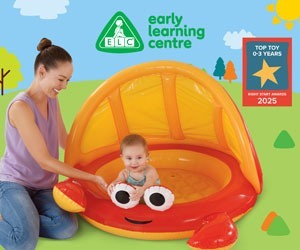A solid start
Published
Every day, many little ones across the UK do something that will impact on the rest of their lives: they take their first mouthful of solid food. This is such a milestone that there’s even a National Weaning Week each year to celebrate it. Building good foundations from the start will help set little ones on a path to having a good relationship with healthy nutritious food later in life.

Lucy Thomas, fussy eating expert and ambassador for Organix, has produced a checklist of advice on how to help to make the weaning process work for your child.
Relax and enjoy
Every baby is different so try not to compare. The weaning stage and pace will differ for each baby – try to relax and enjoy the journey. Don’t ever force foods, rest assured they will get there in the end! There is so much for little ones to take on board from the weaning process onwards, from the visual sight of food to the tactile touch and texture, the sound it makes, the smell and the taste.
Combination feeding
The best way to wean your baby is a matter of personal choice. You may opt for spoon-fed or baby led or rather than feeling you must choose between the two, why not combine them to get the best of both worlds?
Exploring taste and flavour
Your baby’s tastebuds are constantly developing and changing so it’s important to offer a wide range of taste experiences during these early weaning days. Babies are born with a preference for sweet due to the sweetness of breast milk and need to learn to like bitter tastes. So tackle those greens early on!
Trying textures
If your baby pulls a face or pushes food back out with their tongue, this doesn’t indicate a dislike of the food or texture. Textures take a while to become familiar. Combination puree and baby-led finger foods can really help your little one to adjust to the sensory experience of new textures. Try toast soldiers, peeled fruit slices, cooked pasta shapes, Organix Rice Cake Clouds dipped in pureed veggies or fruit, or Organix Little Ruskits a mashable finger food that can be mixed with baby milk and served with a spoon at six months+ or served whole as a finger food from 8 months+
Try, try, try again
It can take up to 10-15 times of offering your little one the same new food before they are willing to accept it. But our patience will pay off and they will get there eventually!
The imitation game
Babies love imitating, so if you are really keen to show your little one how yummy their lunch tastes, why not share weaning foods? Fruit or vegetable puree make great nutritious dips for finger foods that you can both share and enjoy together!
Get messy
Try to avoid wiping your baby’s hands and face during mealtimes and allow your little one to explore food by smearing or squashing it. This will give your baby the chance to explore new foods and quite often messy hands will end up in their mouth where tasting begins! Use an old shower curtain underneath the highchair to catch spills and splats.
No added salt or sugar
Babies don’t need salt or sugar added to their food (or cooking water). They shouldn't eat salty food at all as it isn't good for their immature kidneys and sugar can cause tooth decay.
Have fun!
Make mealtime relaxing and fun. Singing, smiling and using all the senses to explore new foods will really encourage little ones on their weaning journey.
Exploring food
Touch: encourage them to hold and touch the food before eating.
Mess: let your baby explore and play with their food, and don’t worry about wiping them down until the end.
Noise: put puree on their finger and encourage them to make a smooch or popping noise.
Temperature: let them feel how cold the fruit/ veg is on their cheeks.
Visit Organix.com







